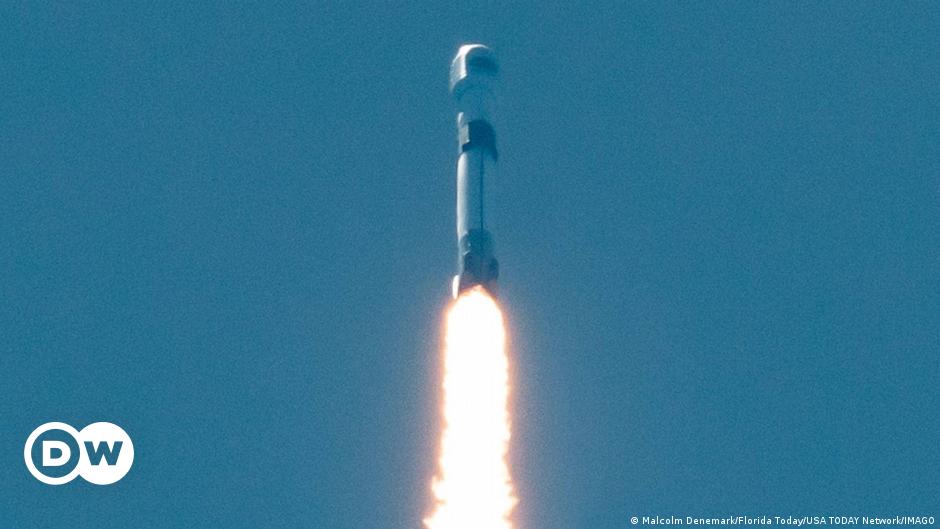Euclid, the European mission to explore the unknown and dark universe, took off on Saturday (07.01.2023) aboard a SpaceX Falcon 9 rocket from Cape Canaveral, Florida.
The launch took place at 15:12 GMT, and after separating from the rocket, Euclid will head towards the point known as Lagrange 2, 1.5 million km from Earth – where telescopes such as Gaia and James Webb are located.
From there, for six years, he will observe billions of galaxies at a distance of up to 10,000 million light-years, in more than a third of the sky; The goal is to create the largest and most accurate 3D catalog of the universe to try to advance knowledge of the nature of dark matter, which holds galaxies together, and dark energy, which is responsible for the expansion of the universe.
Together they make up 95% of the universe, but they remain one of the biggest mysteries in cosmology.
The third dimension of the map will be time: capturing the light of galaxies located 10,000 million light-years away, Euclid will plunge into the past of the Universe, which was born 13,800 million years ago.
Reconstructing the history of the universe
The goal is to reconstruct its history by fragmenting it into “slices of time,” astrophysicist Yannick Millier, president of the Euclid Union, which includes 16 countries, explained at a news conference.
The mission hopes to reveal the traces left by dark matter and energy during galaxy formation.
These two unknown components seem to rule the universe, of which only 5% is made up of “ordinary” and visible matter. For the person in charge of the mission, Giuseppe Racca, this ignorance is a “cosmic shame”.
Without it, scientists cannot explain how the universe works. The mystery dates back to the 1930s, when Swiss astronomer Fritz Zwicky observed the coma cluster of galaxies and assumed that a large part of its mass was invisible.
Almost a century later, there is a consensus in the scientific community about the existence of this absent substance, which is called dark because it neither absorbs nor reflects light.
“When we look at the popping part of the iceberg, there’s something we don’t understand: everything is going too fast,” sums up David Elbaz, Euclid’s collaborator.
The astrophysicist explained to AFP that the speed of rotation of stars in galaxies, including our sun, is so high that they must be disposed of “like a rocket that is freed from Earth’s gravity and disappears.”
But this does not happen. “We infer that there is a complement of gravity that locks them in,” as if it were cement.
In the late 1990s, astronomers discovered a second anomaly that affected the entire universe: galaxies are moving away from each other faster and faster, under the influence of a repulsive force called dark energy.
This acceleration in the expansion of the universe began six billion years ago.
By going back up to 10 billion years, Euclid has been able to better observe and quantify the first effects of dark energy, and those responsible are confident.
But how do we notice the invisible?
Its absence is measured by a distortion effect called gravitational lensing: light from a distant object such as a galaxy is deflected by visible matter and dark matter on its way to Earth.
“By subtracting visible matter, we can ‘calculate’ the presence of dark matter,” Rocca explains.
“By looking at this thread of distortions in the history of the universe, we will understand how dark energy behaves,” Elbaz adds.
The scientist compares it to drawing lines with a felt-tip pen on a balloon “to see how quickly it inflates,” allowing us to understand the effects of dark matter. In this case, the dark energy would be the air making the balloon inflate.
Euclid’s tools for mapping the universe
Euclid has two tools on board: a visible light imager (VIS) and a near infrared spectrophotometer (NISP).
These unprecedented maps of the universe, according to Yannick Millier, will constitute a “gold mine of astrophysics” and will make it possible to study the shape of galaxies or the birth of clusters and black holes.
And it may help scientists finally identify the mysterious, hitherto undiscovered particles that make up dark matter.
At a cost of 1.5 billion euros ($1.63 billion), the European mission should continue until at least 2029.
FEW (AFP, EFE)


:quality(85)/cloudfront-us-east-1.images.arcpublishing.com/infobae/YMJL5TYTFCDXREBK5GQ3GF2NSE.jpg)

:quality(85)/cloudfront-us-east-1.images.arcpublishing.com/infobae/6WHDP7SXDYK6C4RCCMWTB7IJXU.jpg)
